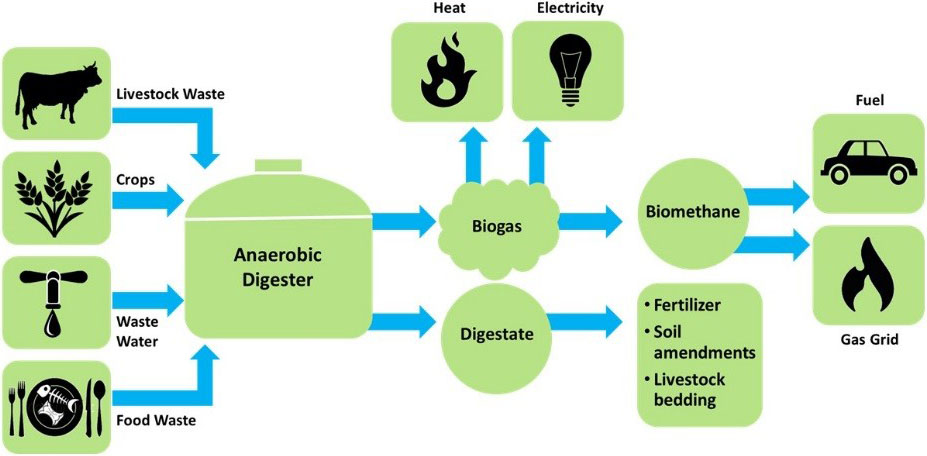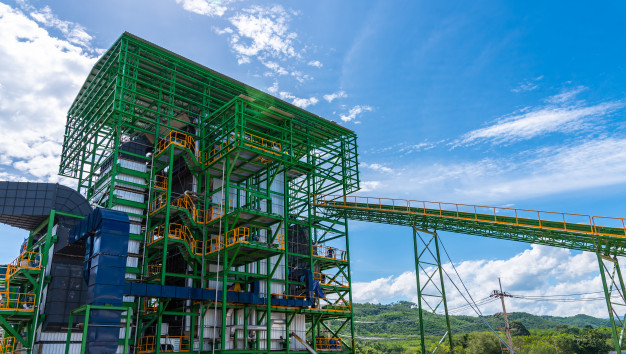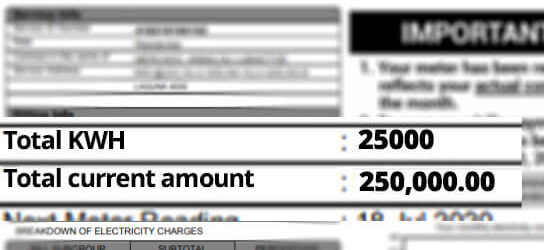Environmental responsibilities, the increasing costs of water and energy, and the hope to be independent are all factors driving cities, businesses, and farms to invest in alternative energy sources. Renewable biofuels such as Biogas can support reliable energy sources, more affordable and encouraging protection of the environment.
What Is Biogas?
Biogas is a type of biofuel that is naturally produced from the decomposition of organic waste. When organic matter, such as food waste and manure, break down in an anaerobic environment (an environment lacking oxygen) they release a combination of gases, principally methane and carbon dioxide. Because this breakdown occurs in an anaerobic environment, the process of producing biogas is also known as anaerobic digestion.

The Benefits of Biogas Recovery
Biomethane is the most energy-efficient biofuel and with the lowest impact on the environment. Here are the benefits of biogas recovery:
• Reliable source of energy
• Affordable energy costs
• Profit potential
• Mitigate carbon footprint
• Less harmful emissions
• Improved air quality
ExplainerSave huge amounts in operational costs. FREE ESTIMATE!The technology used to produce Biogas is affordable. It is easy to set up and requires small investment when on a small scale. Small biodigesters can be used right at home, utilizing waste from the kitchen and animal compost.
How Biogas is Capture
The first step to harvesting the benefits of Biogas is to capture this vital source. Anaerobic digestion happens in nature, landfills, and some livestock manure management systems, but can be optimized, managed, and contained using an anaerobic digester.
Some organic wastes are more challenging to break down in a digester than others. Food waste, fats, oils, and greases are the most manageable organic wastes to break down, while livestock waste tends to be the most challenging. Incorporating various wastes in the same digester, referred to as co-digestion, helps increase the biogas yields. Warmer digesters typically run between 30 to 38 degrees Celsius (86-100 Fahrenheit), to break down the waste more quickly.
Biogas can be captured at many effective facilities, affordable ways to decrease greenhouse gas emissions by lessening methane emissions and displacing fossil fuels for energy production.
The materials that should be used during the process should be made from durable, long-lasting materials to withstand breaks, perforations, chemicals, and ultraviolet rays. Using an insulated cover design will help sustain consistent temperatures during the anaerobic process.
Controlling Biogas Safely
Getting a biogas control system is advised to protect your waste-to-energy investment. This system protects the cover from destruction and securely delivers Biogas into a pipeline for renewable energy conversion.
For safety reasons, the system must maintain a regular vacuum by removing Biogas at the same rate as it is produced. Invest in emergency vent stacks, safety valves, and moisture traps.
Here are some of the biogas safety precautions:
The ability for the cover and biogas control system to endure eroding gases
Real-time remote monitoring aptitudes
Alerts to inform operators of uncertain conditions
Be sure to consult a biogas expert to help select your waste-to-energy project so they can evaluate safety precautions and give advice on how to maximize the use of Biogas.
How to Store Biogas
Gasholders allow treatment plants to store excess Biogas for later use safely. They monitor and respond to fluctuations in biogas volume, and typically range in size from 1,800 ft³ to 180,000 ft³. Invest in a gasholder so that you can operate your digesters with lower energy demand.
Wastewater and organic wastes hold large amounts of power, which explains why waste-to-energy initiatives are rising in many industries, municipalities, and agricultural operations.
It is essential, therefore, that the government should be informed of the benefits of using Biogas and start taking action in the direction of producing alternative energy in rural areas.
Ready to set up your small biogas generation system?
ExplainerSave huge amounts in operational costs. FREE ESTIMATE!Does your business generate organic waste? With REURASIA’s Biogas Energy Solutions, we can help you convert waste into energy reducing your company’s carbon footprint and operational cost.
You can use our online biogas calculator to evaluate the potential of your project! Request for an estimate so you will have an estimation of the costs and benefits that your anaerobic digestion project can generate!
Source:
https://www.eesi.org/papers/view/fact-sheet-biogasconverting-waste-to-energy
See also:
Renewable Energy Implementation Support
Renewable Energy Maintenance Support
Renewable Energy Services
Renewable Energy Solutions


